Import VAT: what SMEs need to know
Import VAT: what SMEs need to know
Importing goods from abroad also means navigating a demanding tax framework. One often overlooked but critical aspect: import VAT. For SMEs exporting to or importing from outside the European Union, understanding and managing this mechanism is essential to avoid unpleasant surprises.
Import VAT: What Are We Really Talking About?
When your business imports goods from outside the EU, there’s no getting around it: import VAT applies. And beware—it’s not quite the same as the “standard” VAT you deal with for purchases within France. This version operates a bit more… intensely.
In simple terms? As soon as your goods cross into the EU and arrive in France, VAT becomes due—not when you sell the product, but at the moment of customs clearance. In other words, you must pay this VAT directly to customs authorities before you even get your hands on your shipment. It’s a bit like having to pay the bill before your meal is served at a restaurant.
This can come as a surprise—especially for first-time importers. Many think VAT applies later, at resale… but in France, it kicks in as soon as the goods enter the territory.
Of course, there are exceptions and special regimes that can ease the burden (notably the reverse charge mechanism, which is a real lifeline for cash flow). But in most cases, you need to plan for it and factor it into your budget.
Bottom line? If you import regularly, it’s best to fully understand the rules. Poorly anticipated VAT leads to immediate cash flow gaps. And that’s never good news for any business…
Why Is Import VAT a Strategic Issue for SMEs?
Importing goods often means growth, new markets, and exciting opportunities… But for an SME, it can become a real trap if import VAT is poorly managed. This seemingly minor tax can quickly become a major drain on your finances.
A Hit to Your Cash Flow
When your products arrive in France, you must pay up—immediately. There’s no symbolic gesture here: you have to advance the VAT upfront. Depending on the value of your imports, the amount can skyrocket. For an SME, it’s often a shock—especially if it wasn’t budgeted for from the start.
No VAT, No Goods
The worst part? If you don’t pay the VAT, your goods are stuck. They’re not cleared—which means unusable. The result: delivery delays, unhappy clients, and idle stock sitting… at the border.
An Administrative Maze
As if that weren’t enough, you also have to navigate the jungle of formalities: EORI number, TARIC code, suspensive customs regimes… These terms alone are enough to give anyone a headache. Yet they’re unavoidable if you want to import legally.
The takeaway? If you’re an SME entering the import business, don’t go in blind. Get training, build a support network, and most importantly, anticipate the VAT issue. It’s far better to be well-prepared than to deal with a nasty surprise later.
The Reverse Charge Mechanism: A Real Opportunity
Since 2022, a small revolution has quietly transformed import procedures: the ability to reverse charge import VAT. Sounds technical, yes—but in reality, it’s a real breath of fresh air, especially for SMEs.
What does it mean in practice?
Previously, you had to pay VAT to customs in cash, as soon as your goods arrived—a real strain on your cash flow, especially for large imports.
Now, if you’ve opted in through your SIE (Business Tax Office), those days are over. You can declare—and reclaim—this VAT directly on your CA3 return, without physically advancing any money. In other words, you pay and reclaim at the same time. Convenient, right?
What are the benefits for your SME?
- Zero cash advance: A game-changer for your finances. No more tying up thousands of euros at customs.
- Simplified accounting: No more bouncing between invoices, customs slips, and VAT records. Everything goes through your CA3 declaration.
- Faster logistics: No delays waiting for bank transfers. Your goods move forward—and so do you.
One important note: This reverse charge option isn’t automatic. You must request it from your SIE. It’s a simple formality, but it can have a massive impact on your day-to-day operations.
How to Avoid Common Mistakes?
At TBI, we regularly support SMEs taking their first steps in non-EU imports. And honestly, we keep seeing the same traps. They’re not catastrophic—but they can be costly or seriously slow you down.
Here are the top 3 mistakes we see most often:
Failing to activate the reverse charge option
It’s a small administrative detail, yes—but one that could cost you thousands of euros in cash flow. And all because someone forgot to send a simple form to their SIE. Frustrating, right?
Getting the customs code (TARIC) wrong
This 10-digit code determines duties, VAT rates, restrictions… One wrong digit, and you risk a tax reassessment or customs blockage. Not the kind of surprise you want in your inbox.
Failing to plan for VAT on multi-country flows
Ah, triangular flows… If you’re importing from a non-EU country via another EU country, the rules shift. If you don’t master them, you might end up paying VAT twice—or struggling to justify it during an audit.
TBI’s Pro Tip
Before you bring in your first pallet of goods, take time to secure the basics. At TBI, we offer a free customs diagnostic for our SME clients: it helps prevent surprises and puts you on solid footing from day one.
Sometimes, a quick check is better than a costly correction…
FAQs
1. Are all imported goods subject to VAT?
Yes. All imports from non-EU countries are subject to VAT, regardless of the type of goods—except in very specific cases (temporary exemptions, duty-free schemes, etc.).
2. How can I know if my business qualifies for the reverse charge?
To apply the reverse charge mechanism for import VAT, your business must be VAT-registered and have obtained approval from your SIE. A simple request using the appropriate form is usually sufficient.
3. Is import VAT recoverable?
Yes. If your business is VAT-registered, you can recover import VAT through your CA3 declaration. The reverse charge mechanism eliminates the need for an upfront payment.
4. What documents do I need to provide to customs?
The key documents include: commercial invoice, transport document, bill of lading or air waybill (AWB), customs declaration (DAU), TARIC code, and your company’s EORI number.
5. Can TBI handle my import VAT declaration?
Absolutely. As an authorized customs operator, TBI manages all formalities for its SME clients: VAT calculations, declarations, document verification, and assistance with setting up the reverse charge process.

